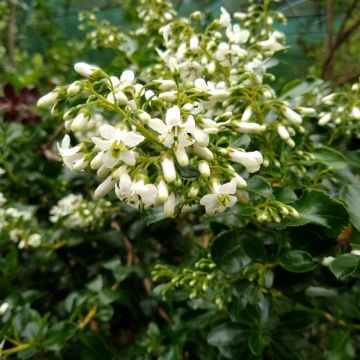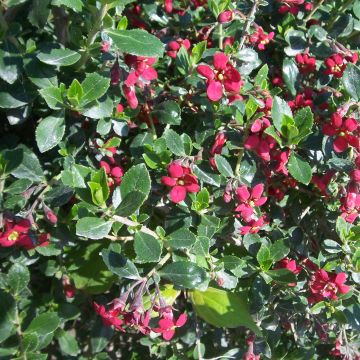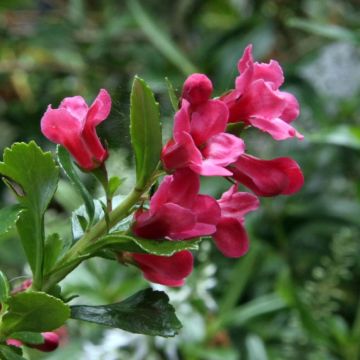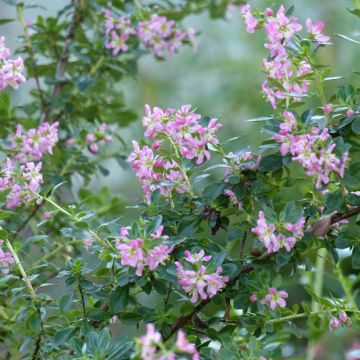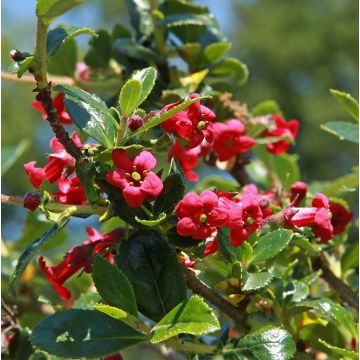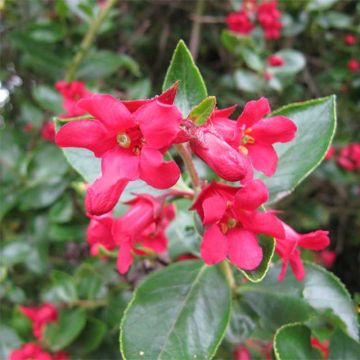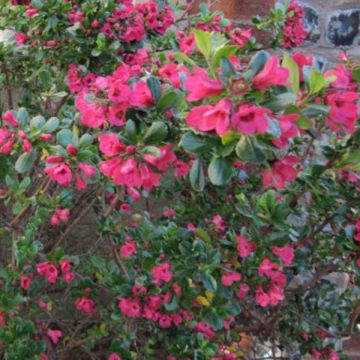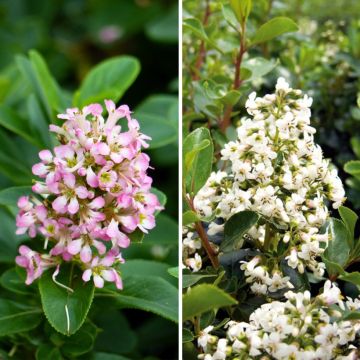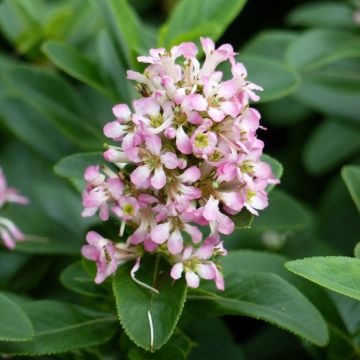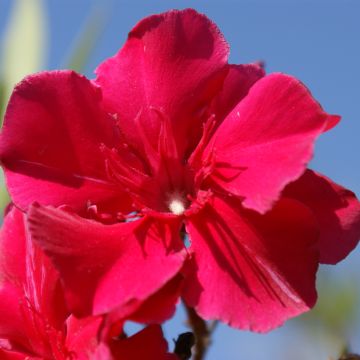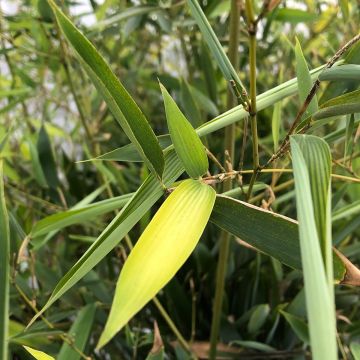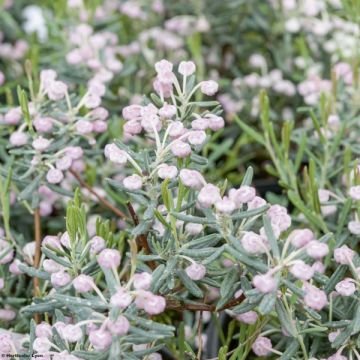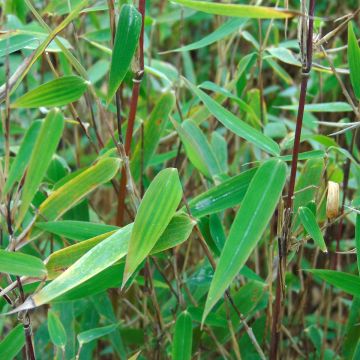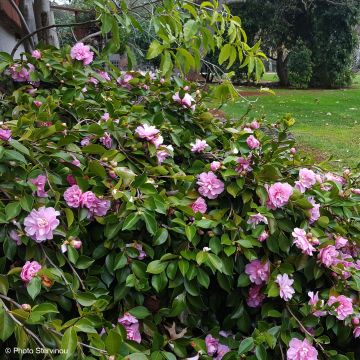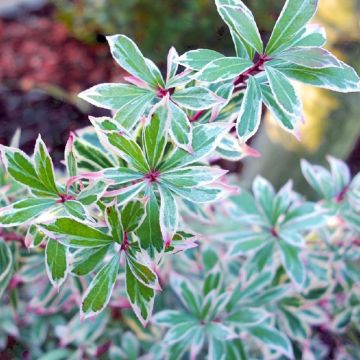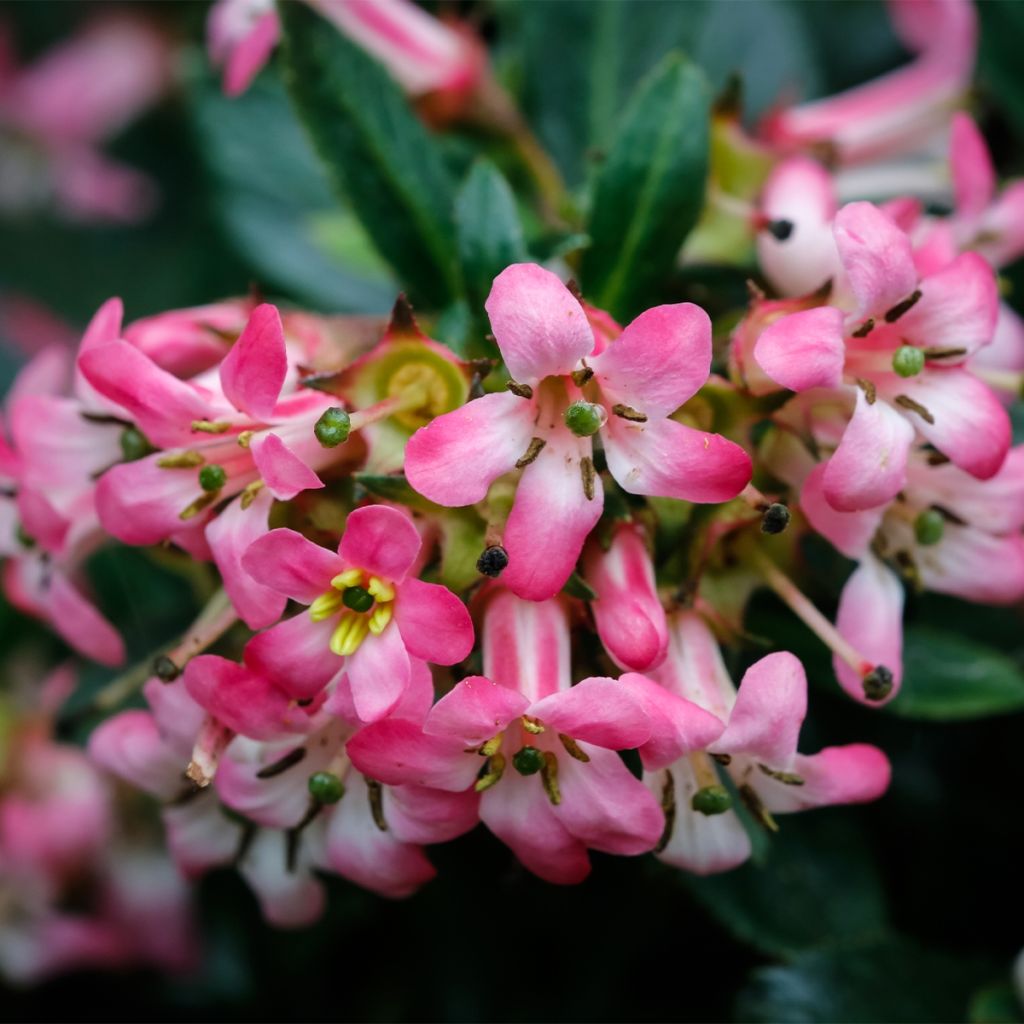

Escallonia hybride Show Stopper
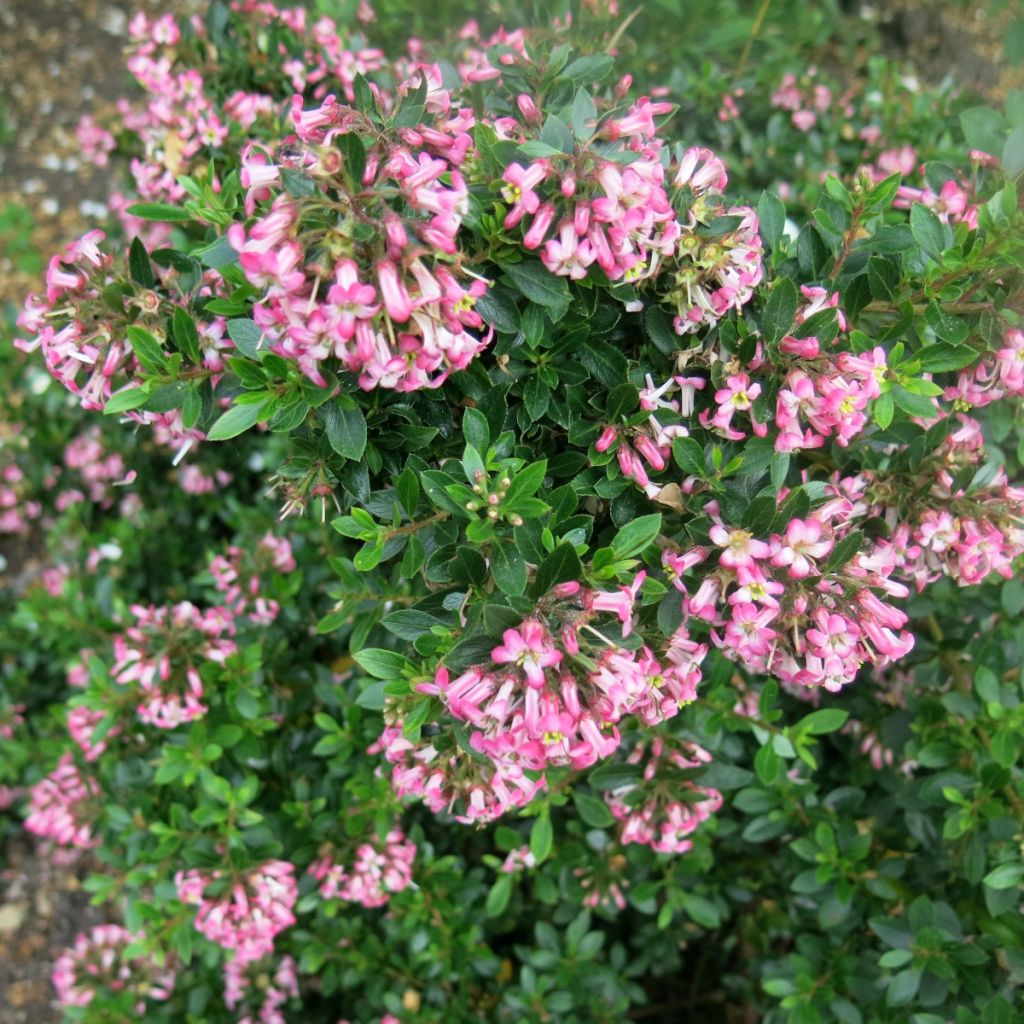

Escallonia hybride Show Stopper
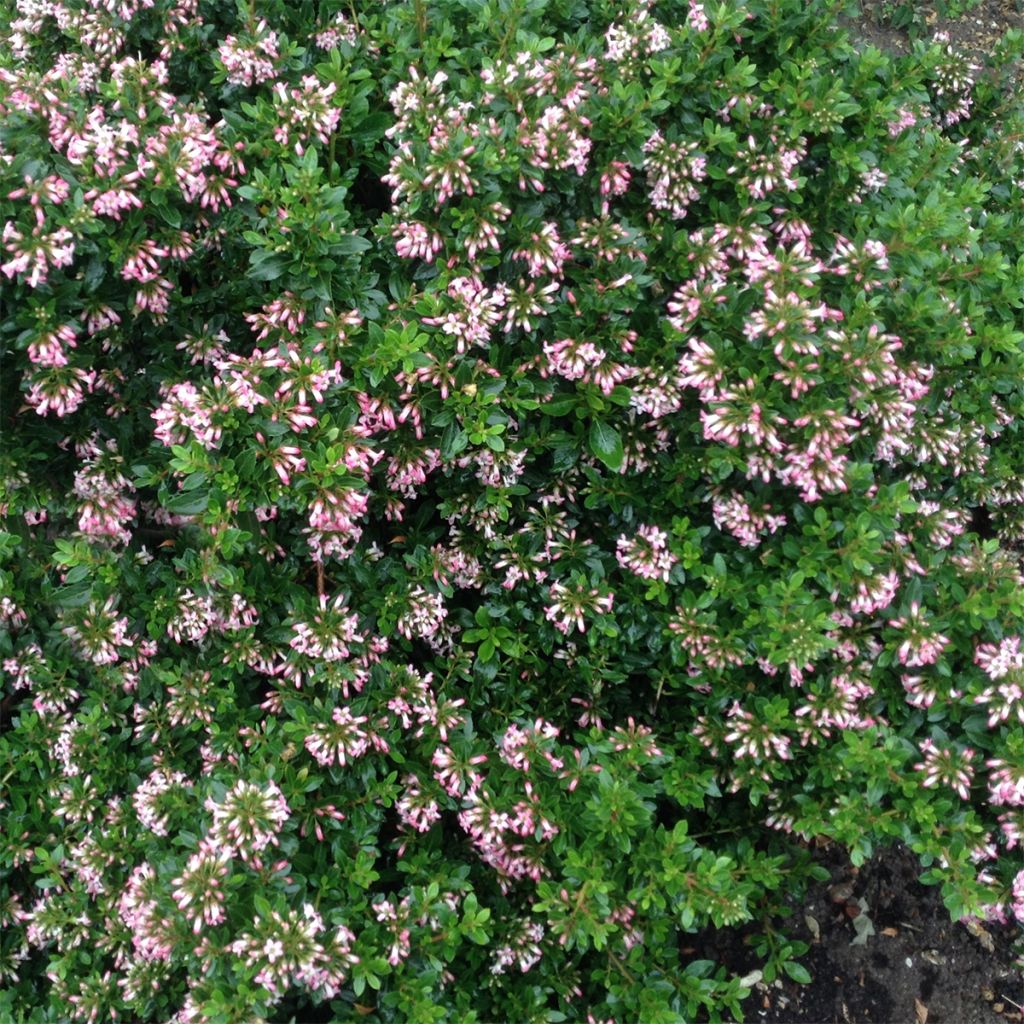

Escallonia hybride Show Stopper
Escallonia Show Stopper
Escallonia Show Stopper
Redclaws
Unfortunately, it didn't survive the winter, even though it wasn't very cold...
Pecario, 31/03/2024
This item cannot be shipped to the selected country
Delivery charge from €5.90
More information
Schedule delivery date,
and select date in basket
This plant carries a 24 months recovery warranty
More information
We guarantee the quality of our plants for a full growing cycle, and will replace at our expense any plant that fails to recover under normal climatic and planting conditions.
From €5.90 for pickup delivery and €6.90 for home delivery
Express home delivery from €8.90.
Does this plant fit my garden?
Set up your Plantfit profile →
Description
The 'Show Stopper' hybrid Escallonia, with its modest growth, large semi-spreading branches, and fine light green foliage, naturally forms a superb decorative dome of vegetation even in winter. The bush also offers extended and abundant summer flowering in bright pink and white, which is highly visited by bees. It forms a charming ground cover and can also be planted in a border or a large bed, and it creates a sensation in a container on the terrace. It is an excellent plant for mild climates and well adapted to coastal areas. If your climate allows it, plant Escallonia, these rewarding bushes grow quickly, are floriferous, often fragrant, and really undemanding!
Escallonia 'Show Stopper' ('Pmoore20') is a recent horticultural creation by British breeder Peter Moore. It is characterized by a low, divergent, semi-spreading, and very dense habit, as well as abundant and well-coloured flowers. Escallonias are excellent garden plants in mild climates and belong to the Escalloniaceae family. These bushes are native to the temperate regions of South America and Chile. In the wild, they grow among the shrubs that cover hillsides or on coasts exposed to sea spray.
Show Stopper forms a rounded, branched, bushy dome, slightly wider than tall. It has a moderately fast to fairly slow growth rate and will reach about 1.10m (3 ft 7 in)-1.20m (3 ft 11 in) in height and 1.50m (4 ft 11 in) in spread at maturity. The long, almost horizontal branches bear small, leathery, ovate leaves with dentate margins, in a bright, vivid, and glossy light green. They are densely arranged, mostly towards the end of the branches. Flowering occurs from June to August, for about two months, earlier or later depending on the climate, sometimes as early as May in warm climates. A second bloom can occur in September-October. Beautiful clusters composed of numerous small flowers with five petals, shaped like tubular bells, in bright pink with a rosy-white throat, enclosed at the base in a purple calyx, are born at the tips of the branches.
Escallonias are a great alternative to Weigelas in mild climates and coastal areas, as well as in dry gardens. 'Show Stopper' forms a beautiful ground cover at the front of shrub borders or hedges. Its small stature is well suited for small gardens, but it can also be grown in containers for terrace and balcony ornamentation. Well-known to Breton, Irish, and English gardeners, Escallonia is also happy in Mediterranean climates, after careful planting and regular watering during the first two or three years. It is not averse to heat, dry summers once established, or slightly chalky soils, and manages to bloom even in scorching or shady situations. It is essential in coastal gardens: its flowering, just like that of Olearias, brightens up the grey foliage of Atriplex, and harmonizes with the flowering of Correa alba rosea. It can be associated with ceanothuses (persistent and compact varieties), brooms (Cytisus scoparius), Loropetalum chinense, and more.
Report an error about the product description
Escallonia Show Stopper in pictures
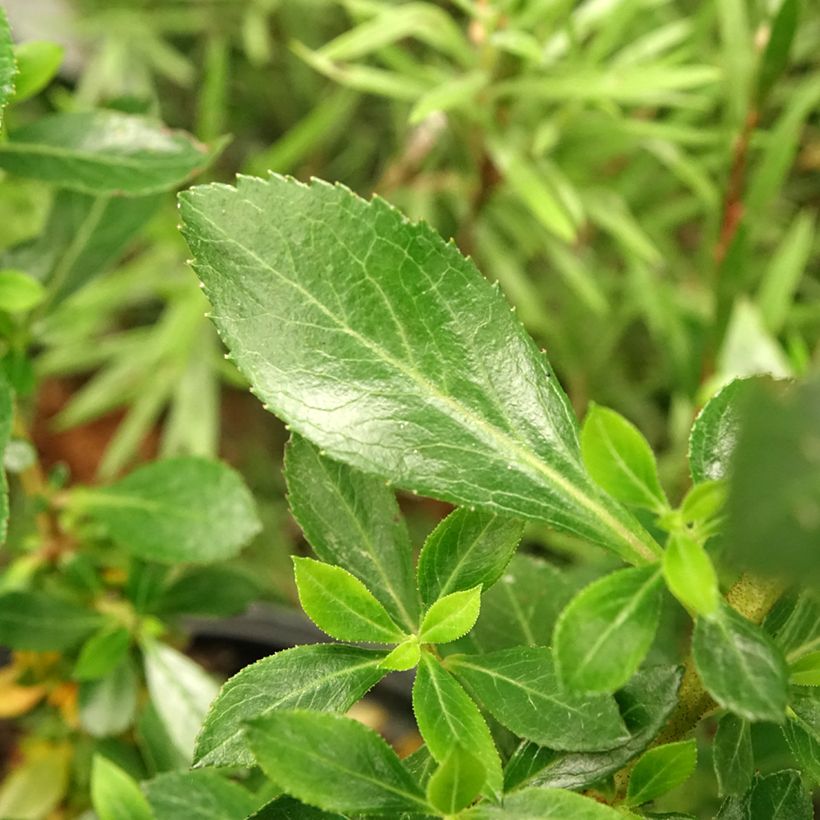

Plant habit
Flowering
Foliage
Botanical data
Escallonia
Show Stopper
Escalloniaceae
Redclaws
Cultivar or hybrid
Other Escallonias
Planting and care
Escallonia Show Stopper is best planted in spring, or early autumn in mild climates. It requires a well-drained, light, slightly acidic, neutral, or even limestone-free soil, in a sheltered and warm position. It blooms more abundantly in the sun, but tolerates shaded exposures well. Once well established in deep soil, it requires no watering in summer, even in dry climates. It can withstand sea spray, but not cold winter winds. You can apply rose fertilizer in spring if your soil is very poor. Prune to balance the shape in February and September. It dislikes heavy soils and stagnant moisture, especially in winter. If the soil is very heavy and chalky, it may suffer from chlorosis; if this is the case, apply a dose of iron chelate each year in spring. Prune the height to a third in the first few years during establishment so that the bush acquires a dense and compact habit. You can also prune it into a ball shape. In regions close to the hardiness zone limit, plant it in a location protected from prevailing winds, south-facing against a wall or west-facing in the back of a bed or in a hedge, and mulch the base in winter. If your Escallonia has frozen in winter, it is likely to regrow from the base in spring. Elsewhere, you can cultivate it in a container to store in a bright room during winter, protected from severe frosts, remembering to water it from time to time.
Planting period
Intended location
Care
-
, onOrder confirmed
Reply from on Promesse de fleurs
Evergreen shrubs
Haven't found what you were looking for?
Hardiness is the lowest winter temperature a plant can endure without suffering serious damage or even dying. However, hardiness is affected by location (a sheltered area, such as a patio), protection (winter cover) and soil type (hardiness is improved by well-drained soil).

Photo Sharing Terms & Conditions
In order to encourage gardeners to interact and share their experiences, Promesse de fleurs offers various media enabling content to be uploaded onto its Site - in particular via the ‘Photo sharing’ module.
The User agrees to refrain from:
- Posting any content that is illegal, prejudicial, insulting, racist, inciteful to hatred, revisionist, contrary to public decency, that infringes on privacy or on the privacy rights of third parties, in particular the publicity rights of persons and goods, intellectual property rights, or the right to privacy.
- Submitting content on behalf of a third party;
- Impersonate the identity of a third party and/or publish any personal information about a third party;
In general, the User undertakes to refrain from any unethical behaviour.
All Content (in particular text, comments, files, images, photos, videos, creative works, etc.), which may be subject to property or intellectual property rights, image or other private rights, shall remain the property of the User, subject to the limited rights granted by the terms of the licence granted by Promesse de fleurs as stated below. Users are at liberty to publish or not to publish such Content on the Site, notably via the ‘Photo Sharing’ facility, and accept that this Content shall be made public and freely accessible, notably on the Internet.
Users further acknowledge, undertake to have ,and guarantee that they hold all necessary rights and permissions to publish such material on the Site, in particular with regard to the legislation in force pertaining to any privacy, property, intellectual property, image, or contractual rights, or rights of any other nature. By publishing such Content on the Site, Users acknowledge accepting full liability as publishers of the Content within the meaning of the law, and grant Promesse de fleurs, free of charge, an inclusive, worldwide licence for the said Content for the entire duration of its publication, including all reproduction, representation, up/downloading, displaying, performing, transmission, and storage rights.
Users also grant permission for their name to be linked to the Content and accept that this link may not always be made available.
By engaging in posting material, Users consent to their Content becoming automatically accessible on the Internet, in particular on other sites and/or blogs and/or web pages of the Promesse de fleurs site, including in particular social pages and the Promesse de fleurs catalogue.
Users may secure the removal of entrusted content free of charge by issuing a simple request via our contact form.
The flowering period indicated on our website applies to countries and regions located in USDA zone 8 (France, the United Kingdom, Ireland, the Netherlands, etc.)
It will vary according to where you live:
- In zones 9 to 10 (Italy, Spain, Greece, etc.), flowering will occur about 2 to 4 weeks earlier.
- In zones 6 to 7 (Germany, Poland, Slovenia, and lower mountainous regions), flowering will be delayed by 2 to 3 weeks.
- In zone 5 (Central Europe, Scandinavia), blooming will be delayed by 3 to 5 weeks.
In temperate climates, pruning of spring-flowering shrubs (forsythia, spireas, etc.) should be done just after flowering.
Pruning of summer-flowering shrubs (Indian Lilac, Perovskia, etc.) can be done in winter or spring.
In cold regions as well as with frost-sensitive plants, avoid pruning too early when severe frosts may still occur.
The planting period indicated on our website applies to countries and regions located in USDA zone 8 (France, United Kingdom, Ireland, Netherlands).
It will vary according to where you live:
- In Mediterranean zones (Marseille, Madrid, Milan, etc.), autumn and winter are the best planting periods.
- In continental zones (Strasbourg, Munich, Vienna, etc.), delay planting by 2 to 3 weeks in spring and bring it forward by 2 to 4 weeks in autumn.
- In mountainous regions (the Alps, Pyrenees, Carpathians, etc.), it is best to plant in late spring (May-June) or late summer (August-September).
The harvesting period indicated on our website applies to countries and regions in USDA zone 8 (France, England, Ireland, the Netherlands).
In colder areas (Scandinavia, Poland, Austria...) fruit and vegetable harvests are likely to be delayed by 3-4 weeks.
In warmer areas (Italy, Spain, Greece, etc.), harvesting will probably take place earlier, depending on weather conditions.
The sowing periods indicated on our website apply to countries and regions within USDA Zone 8 (France, UK, Ireland, Netherlands).
In colder areas (Scandinavia, Poland, Austria...), delay any outdoor sowing by 3-4 weeks, or sow under glass.
In warmer climes (Italy, Spain, Greece, etc.), bring outdoor sowing forward by a few weeks.

































